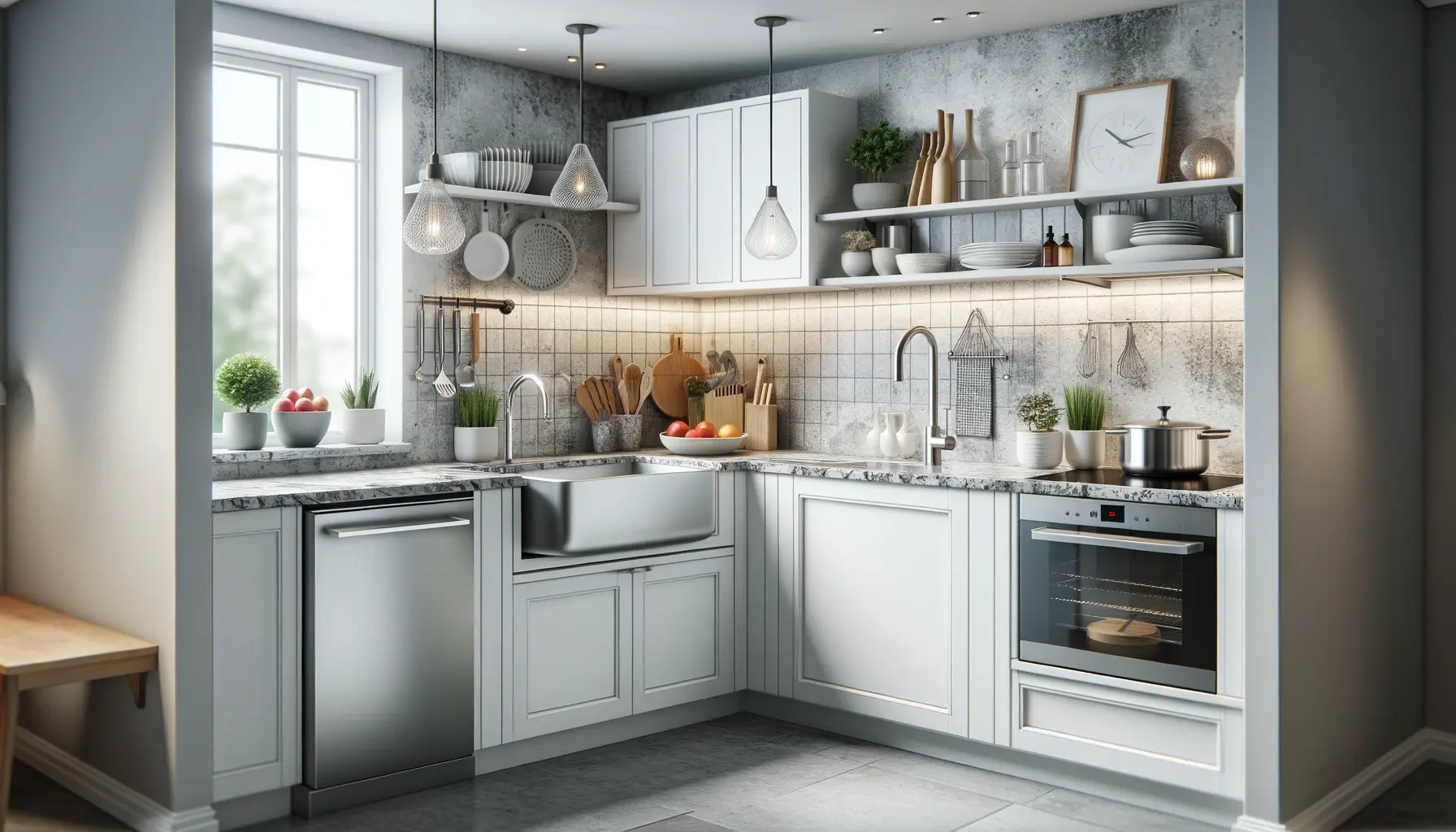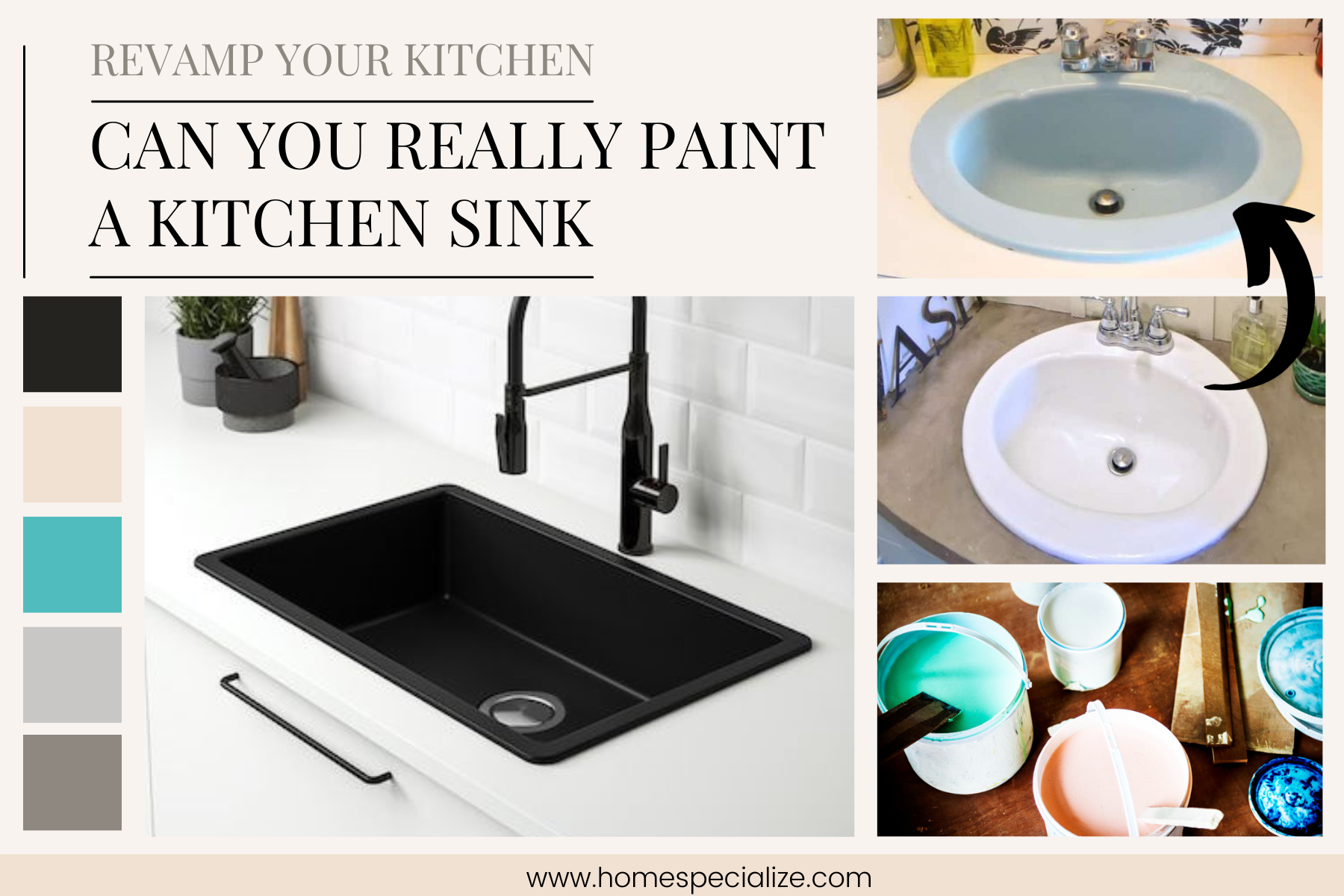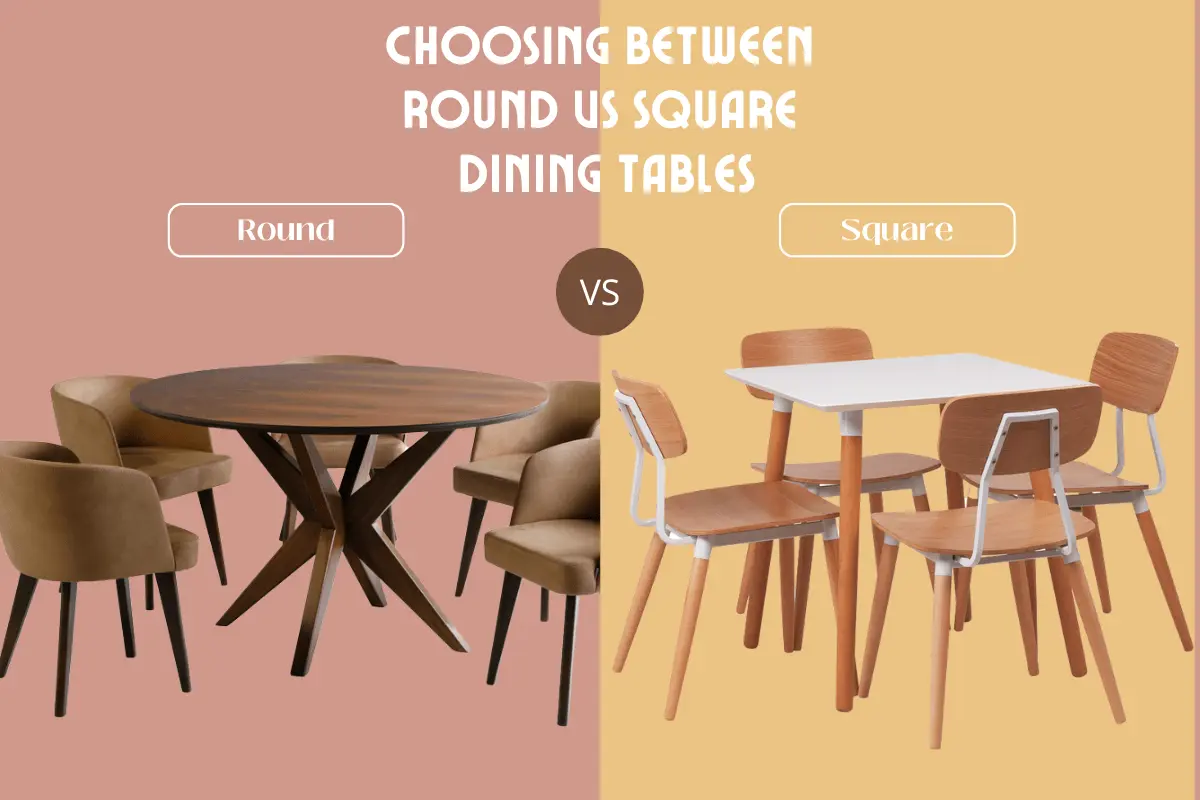Corner kitchen sinks are sinks designed to fit into the corner of a kitchen countertop. They make use of the often-underutilized corner space, providing a practical and efficient solution for kitchens of all sizes. These sinks can come in various shapes and sizes, including single-bowl and double-bowl designs, to meet different needs and preferences.
Benefits of Installing a Corner Kitchen Sink
1. Maximizes Counter Space:
Placing the sink in the corner frees up more counter space for food preparation and other kitchen activities. This is especially useful in smaller kitchens where space is limited.
2. Improves Workflow:
Corner kitchen sinks can create a more efficient kitchen layout. With the sink in the corner, you can place the stove and refrigerator along the other walls, forming a functional work triangle. This setup makes cooking and cleaning easier and more organized.
3. Adds a Unique Design Element:
Installing a corner sink can add a unique and stylish look to your kitchen. It can make the kitchen layout more interesting and visually appealing, setting your kitchen apart from the typical layout.
4. Utilizes Unused Space:
The corner of a kitchen is often a neglected area. By installing a sink in this space, you can make the most of every inch of your kitchen. This is particularly beneficial in kitchens where space is at a premium.
5. Increases Storage Options:
Corner sinks often come with additional storage options underneath. The cabinetry below a corner sink can be designed to store cleaning supplies, pots, pans, and other kitchen essentials, keeping the space organized and clutter-free.
6. Enhances Social Interaction:
With a corner sink, you can face outwards into the kitchen or dining area while washing dishes or preparing food. This setup allows you to interact with family members or guests more easily, making the kitchen a more social and welcoming space.
Types of Corner Kitchen Sinks
Single Basin Corner Sinks
Advantages and Ideal Kitchen Layouts:
-
Advantages:
- Simple and spacious: Single basin corner sinks provide ample space for washing large pots and pans.
- Easy to clean: With only one basin, cleaning is straightforward and quick.
- Versatile: Suitable for various kitchen tasks, from food preparation to dishwashing.
-
Ideal Kitchen Layouts:
- Small kitchens: Maximize counter space and create an open feel.
- Open floor plans: Integrate seamlessly into modern, open kitchen designs.
What Colour Splashback With Grey Kitchen: A Comprehensive Guide
Double Basin Corner Sinks
Benefits and Space Considerations:
-
Benefits:
- Multi-tasking: Allows for washing dishes in one basin while rinsing or soaking in the other.
- Organized workflow: Separate basins help keep clean and dirty dishes apart.
- Efficient use of space: Utilizes corner space effectively while offering the functionality of two basins.
-
Space Considerations
- Requires slightly more counter space than single basin sinks.
- Ideal for medium to large kitchens where additional functionality is beneficial.
Undermount vs. Overmount Corner Sinks
Comparison and Installation Differences:
-
Undermount Sinks:
- Advantages: Sleek and seamless look, easy to clean the counter by sweeping crumbs directly into the sink.
- Installation: Attached beneath the countertop; requires solid surface counters like granite or quartz.
-
Overmount Sinks:
- Advantages: Easier and less expensive to install, edges rest on the countertop providing additional support.
- Installation: Sits on top of the countertop; can be installed on any counter material.
Farmhouse Corner Sinks
Aesthetic Appeal and Functional Benefits:
-
Aesthetic Appeal:
- Classic and charming: Adds a rustic, farmhouse look to your kitchen.
- Deep basin: Provides a visually appealing focal point.
-
Functional Benefits:
- Spacious and deep: Ideal for washing large items and handling big cooking tasks.
- Accessible: Front apron design makes it easier to reach into the sink, reducing strain on your back.
How To Fix A Kitchen Faucet That Won’t Turn Off? From Drips To Dry!
Design Considerations for Corner Kitchen Sinks
Assessing Your Kitchen Space
Measuring and Evaluating Your Kitchen Layout:
-
Measure Your Space:
- Use a tape measure to determine the dimensions of the corner area where you plan to install the sink.
- Measure the length, width, and depth of the available space.
-
Evaluate Your Layout:
- Consider the placement of existing fixtures such as the stove, refrigerator, and cabinets.
- Ensure there is enough room for the sink and adequate counter space around it.
- Think about the workflow and how the sink’s position will affect kitchen activities.
Material Options
Stainless Steel:
- Advantages: Durable, resistant to heat and stains, easy to clean.
- Considerations: Can show water spots and scratches over time.
Copper:
- Advantages: Adds a warm, unique aesthetic, naturally antimicrobial.
- Considerations: Requires regular maintenance to prevent tarnish, can be expensive.
Fireclay:
- Advantages: Extremely durable, resistant to scratches and chips, classic look.
- Considerations: Heavy and may require additional support, limited color options.
Granite Composite:
- Advantages: Very durable, resistant to scratches and stains, available in various colors.
- Considerations: Can be more expensive than other materials, requires specific cleaning products to avoid damage.
Choosing the Right Size and Shape
How to Select the Perfect Dimensions for Your Needs:
-
Determine Your Usage:
- If you frequently wash large pots and pans, consider a larger, deeper sink.
- For basic tasks like washing dishes and food preparation, a standard size may suffice.
-
Measure the Cabinet:
- Ensure your cabinet can accommodate the sink’s dimensions, including depth.
- Check for any obstructions like plumbing or structural elements.
-
Shape Considerations:
- Rectangular: Traditional and functional, fits well in most kitchens.
- Rounded: Offers a softer look, may provide more counter space around the sink.
- Custom Shapes: Tailored to your specific kitchen layout and design preferences.
Functional Features and Accessories
Integrated Drainboards
Benefits of Having a Drainboard:
- Efficient Drying Space: Provides a designated area for drying dishes, utensils, and vegetables, keeping your countertop dry and organized.
- Convenience: Allows water to drain directly into the sink, reducing the risk of water damage to your countertops.
- Hygiene: Keeps wet items off the main counter surface, promoting a cleaner and more sanitary kitchen environment.
Swivel Faucets and Pull-Out Sprayers
Enhancing Functionality and Ease of Use:
- Swivel Faucets:
- Flexibility: Allows you to easily move the faucet out of the way when cleaning large items or accessing different parts of the sink.
- Versatility: Ideal for double basin sinks, enabling you to direct water flow to either side.
- Pull-Out Sprayers:
- Extended Reach: Makes it easier to rinse vegetables, clean the sink, and fill pots that may not fit in the basin.
- Convenience: Enhances the overall functionality of your sink, making daily tasks quicker and more efficient.
Additional Accessories
Custom Cutting Boards, Drying Racks, and Soap Dispensers:
- Custom Cutting Boards: Designed to fit over the sink, providing extra workspace and making it easy to transfer food from the board to the pot or pan.
- Drying Racks: These can be placed over the sink to save counter space and allow water to drip directly into the basin.
- Soap Dispensers: Built-in dispensers keep your sink area neat and free of clutter, ensuring soap is always within reach.
Installation Tips and Best Practices
Pre-Installation Checklist
Important Steps Before Installation:
- Measure the Space: Confirm the dimensions of the sink and the available space in your countertop and cabinet.
- Gather Tools and Materials: Ensure you have all necessary tools and materials, including plumbing supplies and the sink installation kit.
- Turn Off Water Supply: Shut off the water supply to avoid any leaks during installation.
DIY vs. Professional Installation
Pros and Cons of Each Approach:
- DIY Installation:
- Pros: Cost-effective, gives you control over the installation process, satisfying for DIY enthusiasts.
- Cons: Requires tools and skills, risk of incorrect installation leading to leaks or damage, time-consuming.
- Professional Installation:
- Pros: Expertise ensures proper installation, saves time and effort, often comes with a warranty for the work done.
- Cons: Higher cost, requires scheduling and coordinating with professionals.
Plumbing Considerations
Ensuring Proper Water Line and Drain Connections:
- Water Lines: Ensure the hot and cold water lines are properly connected to the faucet. Check for leaks before completing the installation.
- Drain Connections: Make sure the sink’s drain is correctly aligned with the existing plumbing. Use plumber’s tape and sealant to prevent leaks.
- Ventilation: Ensure proper ventilation in the plumbing to avoid slow drainage and potential blockages.
[Cozy Feasts] Unique Round Dining Table Ideas for Every Home
Maximizing Space with a Corner Sink
Storage Solutions
Utilizing the Space Beneath and Around the Corner Sink:
- Under-Sink Cabinets: Install cabinets with pull-out drawers or shelves to make the most of the space. Use these for storing cleaning supplies, pots, pans, and other kitchen essentials.
- Corner Carousels: These rotating shelves allow easy access to items stored in the back corners of the cabinet.
- Hanging Storage: Use hooks or rails on the sides of the cabinet to hang utensils, towels, or small baskets.
Vertical Space Utilization
Installing Shelves and Organizers Above the Sink:
- Floating Shelves: Add floating shelves above the corner sink to store dishes, glasses, or decorative items. This keeps frequently used items within reach and adds visual interest.
- Wall-Mounted Racks: Use wall-mounted racks or magnetic strips to hold knives, spice jars, or kitchen tools.
- Cabinet Extensions: Extend your upper cabinets to the ceiling to provide extra storage space for items you don’t use daily.
Creative Layout Ideas
Incorporating Corner Sinks into Various Kitchen Designs:
- Galley Kitchens: Place the corner sink at the end of a galley kitchen to maximize counter space and create a functional work triangle.
- L-Shaped Kitchens: Integrate the corner sink into an L-shaped kitchen layout to make efficient use of the corner area, providing ample workspace on either side.
- U-Shaped Kitchens: In a U-shaped kitchen, a corner sink can serve as a central hub, with countertops extending on both sides for preparation and cooking.
Aesthetic Enhancements
Lighting Options
Using Natural and Artificial Light Effectively:
- Natural Light: Position the corner sink near a window to take advantage of natural light. This makes the area bright and inviting while providing a pleasant view.
- Task Lighting: Install under-cabinet lighting or pendant lights above the sink for focused illumination. This helps with visibility during food preparation and dishwashing.
- Ambient Lighting: Use recessed lights or track lighting to create a warm, evenly lit kitchen environment.
Complementary Countertops and Backsplashes
Designing a Cohesive Look:
- Countertops: Choose a countertop material that complements your sink and overall kitchen design. Popular options include granite, quartz, and butcher block. Ensure the color and texture harmonize with the sink and cabinetry.
- Backsplashes: Select a backsplash that adds visual interest and ties the design together. Options include subway tiles, mosaic patterns, or natural stone. Match the backsplash with the color scheme and style of your kitchen.
Decorative Elements
Adding Plants, Decorative Faucets, and Accessories:
- Plants: Incorporate small potted plants or a herb garden near the sink to add a touch of nature and freshness to the kitchen.
- Decorative Faucets: Choose a stylish faucet that complements the sink and enhances the kitchen’s aesthetic. Options include brushed nickel, matte black, or vintage brass finishes.
- Accessories: Add decorative soap dispensers, colorful dish towels, and elegant drying racks to personalize the space and make it more functional.
Pros and Cons of Corner Kitchen Sinks
Advantages
Space-Saving:
- Efficient Use of Space: Corner kitchen sinks utilize often underused corner areas, freeing up valuable counter space for other activities.
- Opens Up the Room: By placing the sink in the corner, the kitchen feels more open and spacious, making it ideal for small kitchens.
Unique Design:
- Aesthetic Appeal: Corner sinks add a unique and stylish element to your kitchen layout. They can serve as a focal point, making your kitchen stand out.
- Versatility: Suitable for various kitchen styles, from modern to traditional, offering flexibility in design choices.
Enhanced Workflow:
- Functional Layout: Positioning the sink in the corner can create an efficient work triangle with the stove and refrigerator, streamlining kitchen tasks.
- Improved Interaction: Corner sinks allow for better interaction with family members or guests while working in the kitchen, as they often face outwards.
Potential Drawbacks
Limited Cabinet Storage:
- Reduced Cabinet Space: The corner placement can limit the size and accessibility of under-sink cabinets, making storage more challenging.
- Custom Cabinetry Needed: Often requires custom or specialized cabinets to make full use of the corner space, which can be more expensive.
Cleaning Challenges:
- Hard-to-Reach Areas: Cleaning around the edges and back of a corner sink can be difficult, leading to potential hygiene issues if not maintained properly.
- Water Splashes: The position may cause water to splash onto adjacent countertops or walls, requiring frequent wiping.
Accessibility Issues:
- Ergonomics: For some users, corner sinks may be less comfortable to use due to their position, especially if bending or reaching into the corner is required.
- Limited Counter Space on Sides: Depending on the kitchen layout, there may be less counter space on either side of the sink for prep work.
Real-Life Inspirations and Case Studies
Modern Kitchen Designs
Examples of Contemporary Corner Sink Installations:
-
Sleek Minimalist Kitchen:
- Design: A corner sink with a stainless steel finish, paired with white quartz countertops and floating shelves above for a clean, modern look.
- Features: Integrated drainboard and pull-out sprayer faucet for added functionality.
-
Open Concept Layout:
- Design: A double basin corner sink in a large open kitchen, with dark granite countertops and under-cabinet lighting for a striking contrast.
- Features: Ample surrounding counter space and an adjacent kitchen island to enhance workflow.
Traditional Kitchen Designs
Classic Corner Sink Setups:
-
Rustic Farmhouse Kitchen:
- Design: A fireclay farmhouse corner sink with a deep basin, surrounded by butcher block countertops and classic white cabinetry.
- Features: Brass fixtures and vintage-style accessories to complete the traditional look.
-
Cozy Country Kitchen:
- Design: A corner sink with a ceramic finish, complemented by decorative tile backsplash and wooden cabinets with glass fronts.
- Features: Open shelving above the sink and a built-in drying rack for practicality and charm.
User Testimonials
Feedback from Homeowners with Corner Sinks:
-
Emily’s Experience:
- Testimonial: “Our corner sink has made a huge difference in our small kitchen. It frees up so much counter space and makes the room feel bigger. Cleaning can be tricky, but the space-saving benefits are worth it.”
-
Mark’s Feedback:
- Testimonial: “We love our corner sink in our modern kitchen. It looks unique and the workflow is great. The only downside is the limited cabinet space underneath, but we managed with some custom pull-out drawers.”
- Sophia’s Insights:
- Testimonial: “The farmhouse corner sink in our kitchen is perfect. It’s deep and holds large pots easily. The rustic look fits our home’s style perfectly. Keeping the back area clean is a bit of a hassle, but it’s manageable.”
Final Thoughts on the Benefits and Considerations of Corner Kitchen Sinks
Corner kitchen sinks offer a practical and stylish solution for maximizing space and enhancing the functionality of your kitchen. They can transform an underutilized corner into a highly efficient and attractive area, making your kitchen more enjoyable to use. However, it’s important to consider the potential drawbacks, such as limited cabinet storage and cleaning challenges, to ensure it fits your needs.
By carefully assessing your kitchen layout, choosing the right materials and accessories, and considering both the advantages and potential issues, you can make an informed decision. A well-chosen corner kitchen sink can be a valuable addition to your home, offering both aesthetic appeal and practical benefits.
Need for more information about Kitchen & Dining, visit our website for more home interior contents Homespecialize





